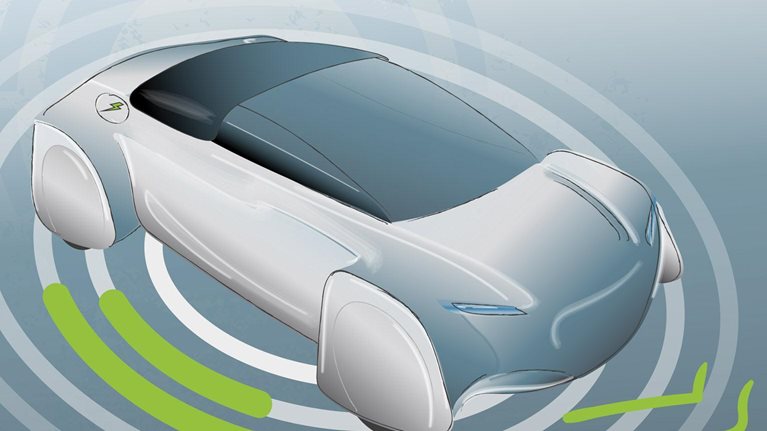The increasing popularity of shared mobility will slow global vehicle sales but not reverse them. Although there likely will be fewer new vehicles on the road because of sharing, car sales in developing countries will outpace shared mobility’s impact over the next 15 years. Still, through 2030, roughly a third of the expected increase in vehicle sales from urbanization and macroeconomic growth likely will not happen because of shared mobility (Exhibit 1). Nonetheless, the shared-mobility story isn’t all bad for the industry, especially if automakers, suppliers, and the other mobility players take steps now to position themselves for it.

Vehicle sales will outpace the impact of shared mobility primarily because of strong expected growth in Asia and the high replacement frequency of shared vehicles due to their high utilization. Research also suggests that shared mobility will only partially replace car ownership. A 2017 McKinsey survey reveals that 67 percent of all US respondents prefer driving their own cars over using ride-hailing apps, and 63 percent aren’t interested in trading their vehicles for shared-mobility rides—even if they’re free.
While the shared-mobility industry remains embryonic, its new players are already over-taking some much larger automakers with respect to market valuations, suggesting strong investor support.
Stay current on your favorite topics
Sizing the shared-mobility market
In three core regions—China, Europe, and the United States—the shared-mobility market was nearly $54 billion in 2016, and it should continue to experience impressive annual growth rates in the future. Under the most positive scenario, which involves strong customer demand for self-driving taxis or shuttles (so-called robo-taxis or shuttles), in low-density locations and in cities that take steps to enable them, the market could see 28 percent annual growth from 2015 to 2030. Even the least aggressive scenario points to steady growth based on convenience and economics; it projects 15 percent annual expansion, even if customers do not readily adopt robo-taxis and cities do not support them.
Currently, China and the United States are the two largest markets for shared mobility, at $24 billion and $23 billion, respectively. Both markets are dominated by e-hailing players, which hold market shares that exceed 80 percent in each country. Europe’s market, on the other hand, is much smaller, at just under $6 billion, and leans toward car sharing with a more fragmented landscape (cities regulate sharing individually, and the business is more asset intensive).
One insight that’s already apparent from the industry is the lack of a one-size-fits-all mobility model. That means participants need to conduct market segmentations at the city level. Berlin, for example, runs on convenient car sharing, with multiple players and limited e-hailing opportunities because of taxi-related regulation. Meanwhile, Beijing, a mid-income, densely populated city, has a shared-mobility market of more than $700 million. Focused mainly on a strong e-hailing platform, Beijing is a winner-takes-most market where one company controls nearly the entire market.
McKinsey’s 2017 consumer survey indicates shared mobility should see further growth (Exhibit 2). Of those currently using nontaxi ride-hailing services, 63 percent expect to increase their usage “a lot” in the next two years, and even more (67 percent) say they will do the same concerning car sharing.

While those who use shared mobility clearly expect to use it much more in the future, it still only accounts for a small fraction of total vehicle miles traveled. In fact, today, shared mobility makes up about one percentage point of the 30 percent of annual vehicle miles traveled that it could currently address. Limitations include the lack of availability of these solutions in rural settings, and sharing tends not to favor frequent commuting due to its cost and the availability of less expensive options such as carpooling. It’s also less attractive for running errands or multistop shopping trips. Shared-mobility solutions do, however, make sense for traveling to social events in urban areas.
Changing the mobility game
Further growth in shared mobility will depend on how effectively the industry eliminates existing customer pain points. For example, some uses such as shared-mobility vehicle pooling can create uncomfortable dynamics among passengers who are basically strangers, while a solo ride-share commute may be too expensive for most people to use daily.
Would you like to learn more about our Automotive & Assembly Practice?
Purpose-built vehicles offer one solution to current issues, especially those concerning cost (Exhibit 3). For instance, in the United States, a typical vehicle might cost nearly $24,000 because it represents a compromise developed to appeal to the broadest spectrum of consumers in target segments. A purpose-built vehicle, on the other hand, could feature lower levels of complexity; less powerful engines; simpler, easier-to-clean interiors; less complicated assembly processes; and lower distribution costs. Such a car could cost almost 25 percent less than a typical vehicle.

However, the real game changer is likely to be autonomous vehicles. Take the current limits on shared mobility imposed by population size and density. Today, car sharing is rarely economically viable in cities with fewer than half a million inhabitants. Self-driving cars would enable mobility players to reposition vehicles optimally, allowing smaller fleets to provide adequate coverage and reducing the fixed cost base. Autonomy would also let companies target different user segments via smaller differentiated fleets of vehicles. Vehicle self-parking capabilities could reduce inner-city congestion (for instance, by self-parking in less densely populated areas). These inherent benefits could make car sharing more acceptable to local governments and would likely also increase customer use of the service.
Eliminating the cost for the driver is the unique benefit offered by autonomous vehicles. Roughly 45 percent of the costs of operating an e-hailing vehicle relate to the driver; taking him or her out the equation offers early adopters a huge competitive advantage.
Evolving or transforming completely: What’s ahead for shared mobility?
We see two different paths for the future of shared mobility: the industry could grow steadily in its current state through 2030, or it may become an entirely different market. In our view, three drivers will decide which scenario becomes reality: customer preferences, regulation, and technology.
The status quo path would likely involve steady growth based on convenience and economics, as industry players offer cost-efficient alternatives to taxis and public transportation. The transformative path could see rapid acceleration with the introduction of autonomous vehicles and supportive city initiatives, enabling companies to offer new options for user experience and monetization based on purpose-built vehicles.
While today’s market valuations might suggest otherwise, it remains unclear that the industry’s two leaders will ultimately dominate in a winner-takes-all market. The transformative path could disrupt the current shared-mobility business model if cities regulate self-driving taxis as they do public transportation, if automakers and others operate autonomous vehicle fleets, and if small fleets of self-driving cars prevail.

Disruptive trends that will transform the auto industry
Automakers attempting to position themselves for the future must determine how to benefit from a market that could take these two alternate paths. The following strategic options might be relevant to either pathway, or to both:
- Prepare for purpose-built vehicles (transformative path). Strive to be the first to develop purpose-built vehicles, and cooperate with providers of shared-mobility platforms to scale up quickly and gain market share.
- Use shared mobility as an indirect channel (either path). Use shared mobility to ensure fleet emission compliance (via electric vehicles), test new technologies or designs, and gain access to customer data, where legally permissible.
- Become a platform player (status quo path). Find ways to access the platform business, and develop strategies to attract a customer base.
- Become a fleet operator (transformative path). Develop relationships with key cities and invest in capability building.
Automotive-component suppliers can also take steps to prepare for shared mobility opportunities. Suggestions include the following:
- Take advantage of product testing and data opportunities (both paths). Provide components for fleet vehicles and employ shared mobility to test technologies and components and gain access to customer data, where legally permissible.
- Become an expert (transformative path). Be the first to develop components for purpose-built vehicles, or build capabilities and become a thought leader in component design for shared-mobility vehicles.
- Become a fleet operator (transformative path). Build or strengthen relationships with leading original-equipment manufacturers (OEMs) to cooperate on (or initiate dialogues regarding) purpose-built vehicles.
Global OEMs and suppliers should prepare themselves for both paths, since the shared-mobility market is likely to grow at different speeds and take different forms in various regions. This is also true for many other mobility players beyond the traditional automotive industry.
As shared mobility continues to gain momentum, automakers and their suppliers need to understand what’s driving its popularity, which will vary from country to country and city to city. While shared mobility will probably inhibit new vehicle sales to an extent, automotive players can nonetheless position themselves to benefit from its ultimate success.


